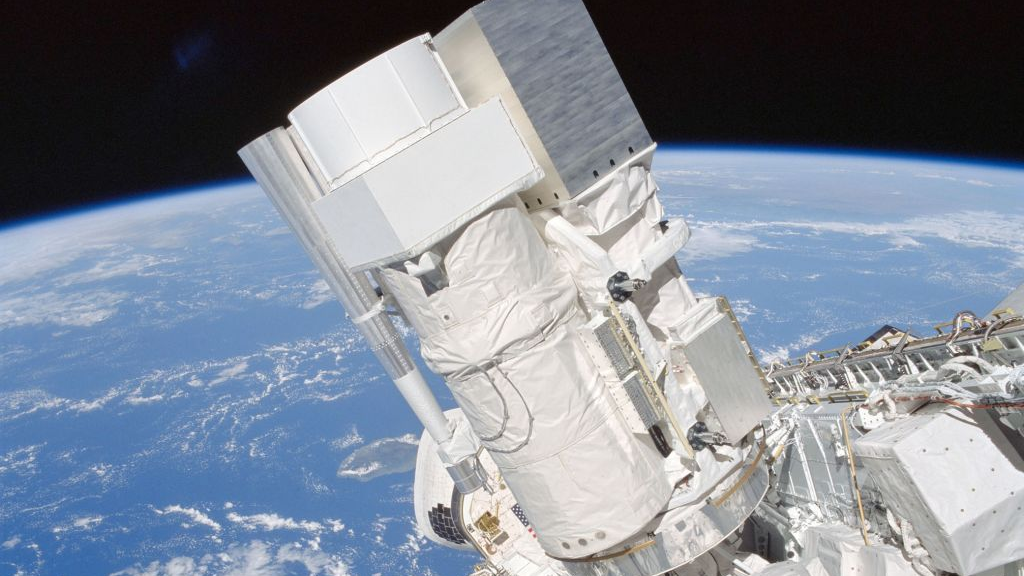These ancient observatories will be displayed in museums when restored.
4 min read
In 1990 and 1995, respectively, NASA The Astro-1 and Astro-2 missions were launched, with the aim of studying astronomy and astrophysics. Now, three decades later, a group of NASA volunteers and industry partners are working on the Astro Recovery Project to restore the hardware for these missions and restore them to their pre-launch condition. After that, the pieces will be displayed in museums.
The Astro-1 Observatory was launched during the STS-35 mission in December 1990 aboard the Space Shuttle Columbia. He had three telescopes to make observations in ultraviolet light, and although it was not easy to operate, it made it possible to make 200 distinct observations of 130 astronomical objects. Then, in 1995, it was the turn of the Astro-2 launch, which flew with the space shuttle Endeavor. With the success of the previous mission, Astro-2 was approved as a follow-up mission, which returned telescopes into space and brought the number of unique astronomical targets to more than 250.

To restore the mission component’s condition, the project relies on several retired NASA employees who worked on preparing the launch payload. “In 1985, in preparation for Astro-1, I did the original installation of these boxes,” commented Mike Haddad, a former NASA mechanical engineer and project member. The boxes he referred to were equipment responsible for sending the Astro instrument’s signal to the space shuttle and then back to Earth. “Is the same procedure after 35 years?” he said.
Want to follow the best tech news of the day? Access and subscribe to our new YouTube channel, Canaltech News. Every day a summary of the most important news from the world of technology for you!
Reclaiming what was part of Astro’s missions is no easy task, and the project team knew that telescopes and their components could have a different fate. “Usually when the flight hardware comes back, NASA either refurbishes it or removes it and disassembles the components for other uses,” explained Mike Haddad, a former NASA mechanical engineer and one of the project members. When a unique piece is called a “twisted mission,” a lot of vintage hardware is either sent to collectors and museums or sold. Fortunately, the team’s work has already led to the restoration of 90% of the original instruments: The three ultraviolet telescopes have been returned to principal investigators, at universities and at NASA’s Goddard Space Flight Center.

The Smithsonian’s ordered one of the systems, as part of the National Air and Space Museum’s collection. In parallel, the fourth telescope that flew with Astro-1 was the fate of the so-called “twisted parts” and was sold online a few years ago. An aluminum frame that was used to support telescopes and other parts was found at a garage auction. To round out the project members’ luck, they were able to recover a set of optical sensors, which fixed the telescopes at the same observation point in space, inside their original cargo box.
Next steps
Although they have already managed to recover a large part of the hardware, the team still had some difficulties in the case of parts that suffered deterioration due to exposure and time. In addition, there are pieces that became nests for rats and wasps, and others that were incomplete. With the first optical sensor and telescope package already complete, they are expected to be installed in the aluminum frame during the fall in the US.
Then, next year, they will join the other two ultraviolet telescopes that were missing to finish the setup. Thus, the components of the Astro missions will be on display at the Space & Rocket Center Museum until the Smithsonian facility is ready for its own exhibition. Scott Fangen, a NASA veteran, considers the physical presence of these objects to be one of the most important parts of the job.

That’s because free-flying payloads and those launched into space, like the Hubble telescope, have made invaluable contributions and rewrote science textbooks, but they will never return to Earth. “With Astro, our grandchildren and great-grandchildren will be able to touch the devices that entered space and appeared in the history books,” Vangen explains.
As with the original Spacelab construction missions, restoring Astro components was a powerful lesson for the team. “Whether it’s in science, engineering, aviation operations, or human experience in general, it’s always possible to learn from what you’ve already done and apply it to what’s to come.” She said. “Future generations will be able to visit the Astro Gallery – and see firsthand what humans can do.”
Did you like this article?
Subscribe to your Canaltech email to receive daily updates with the latest news from the world of technology.

“Entrepreneur. Music enthusiast. Lifelong communicator. General coffee aficionado. Internet scholar.”

:strip_icc()/s04.video.glbimg.com/x720/11792055.jpg)

:strip_icc()/s03.video.glbimg.com/x720/11786998.jpg)



